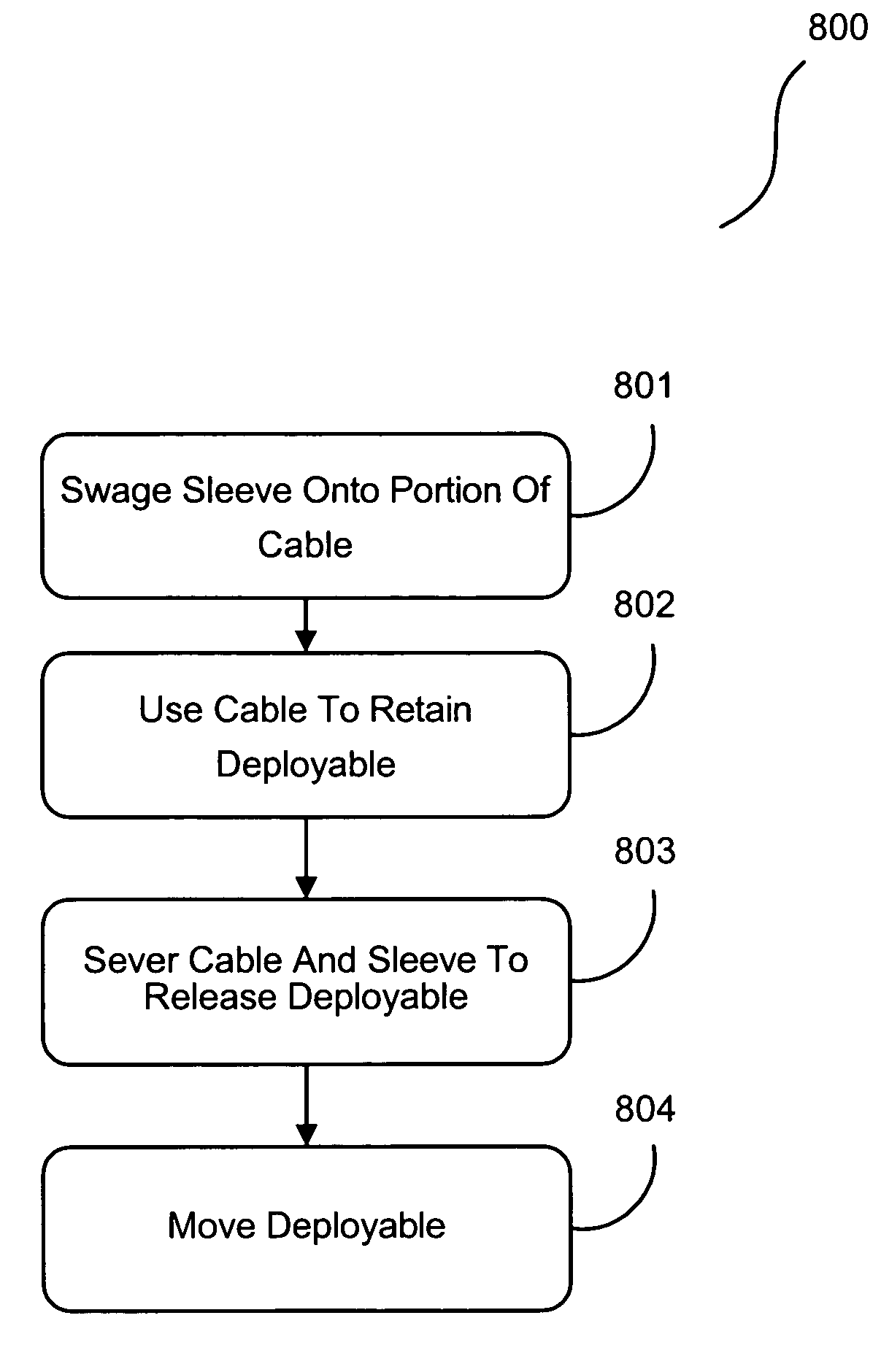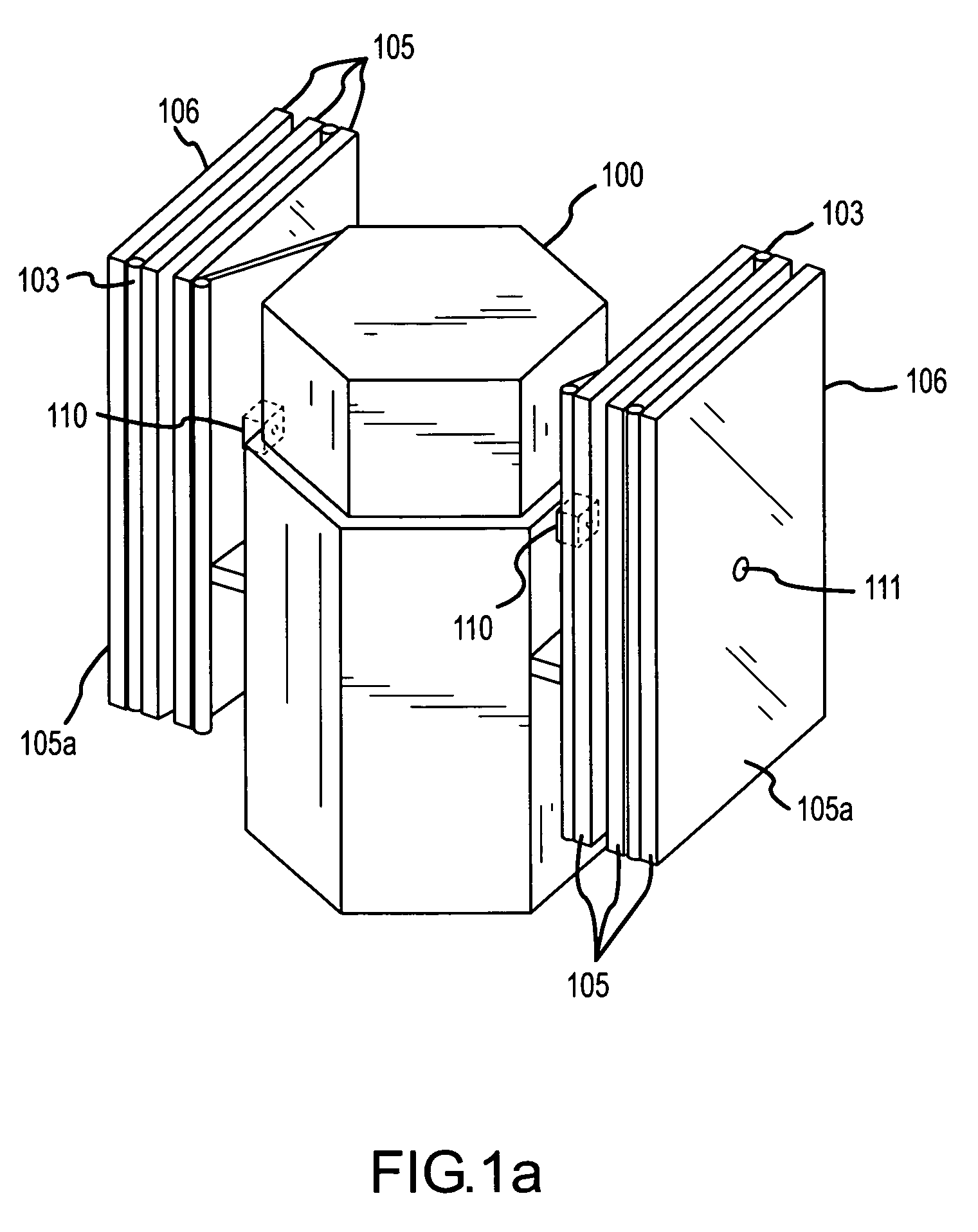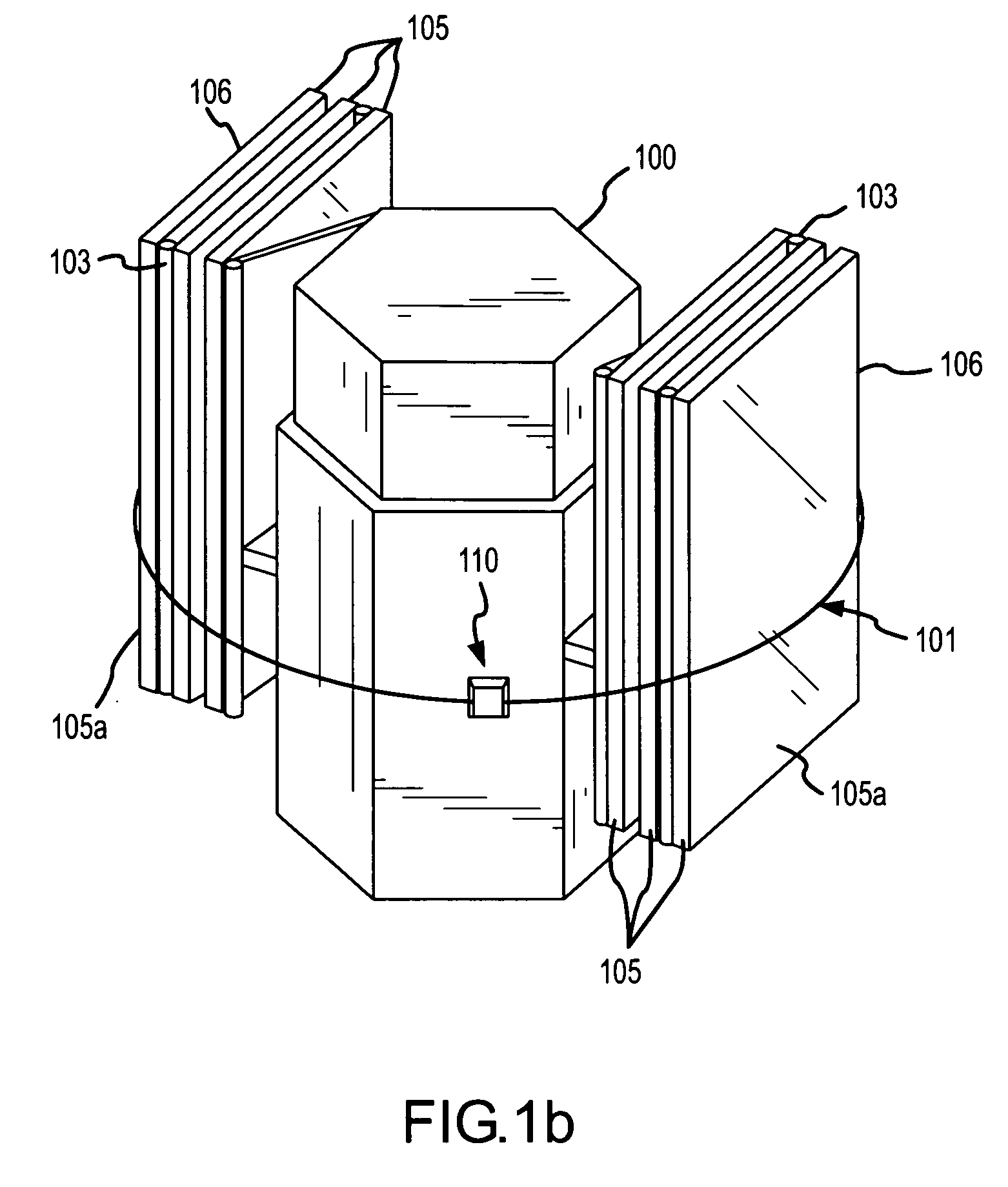Swaged cable deployment in space
a technology of swaged cables and deployment systems, applied in the field of deploying objects in space, can solve problems such as sleeve tear, and achieve the effects of preventing cable splaying, reducing sleeve tear, and reducing sleeve tear
- Summary
- Abstract
- Description
- Claims
- Application Information
AI Technical Summary
Benefits of technology
Problems solved by technology
Method used
Image
Examples
Embodiment Construction
[0026]FIGS. 1a, 1b and 2 illustrate a spacecraft 100 with a solar panel array 106 restrained by a cable restraint / deployment mechanism 110. FIGS. 1a and 1b are perspective views of spacecraft 100 with solar panel array 106 restrained in a stowed position by cable restraint / deployment mechanism 110. In this embodiment, the stowed position is such that panels 105 of array 106 are folded upon one another. Cable restraint / deployment mechanism 110 may restrain the panels 105, for example, until placement of spacecraft 100 in an orbit. Upon placement in orbit, spacecraft 100 may deploy the solar panel array 106 using cable restraint / deployment mechanism 110.
[0027]The cable restraint / deployment mechanism 110 uses cable 101 (shown below in FIGS. 2 and 3) to restrain solar panel array 106 until deployment. In this embodiment, cable 101 is a wire rope cable as is well-known to those skilled in the art. Cable 101 is threaded through panels 105 via cable guides 104 and is affixed at one end to ...
PUM
| Property | Measurement | Unit |
|---|---|---|
| thickness | aaaaa | aaaaa |
| diameter | aaaaa | aaaaa |
| diameter | aaaaa | aaaaa |
Abstract
Description
Claims
Application Information
 Login to View More
Login to View More - R&D
- Intellectual Property
- Life Sciences
- Materials
- Tech Scout
- Unparalleled Data Quality
- Higher Quality Content
- 60% Fewer Hallucinations
Browse by: Latest US Patents, China's latest patents, Technical Efficacy Thesaurus, Application Domain, Technology Topic, Popular Technical Reports.
© 2025 PatSnap. All rights reserved.Legal|Privacy policy|Modern Slavery Act Transparency Statement|Sitemap|About US| Contact US: help@patsnap.com



